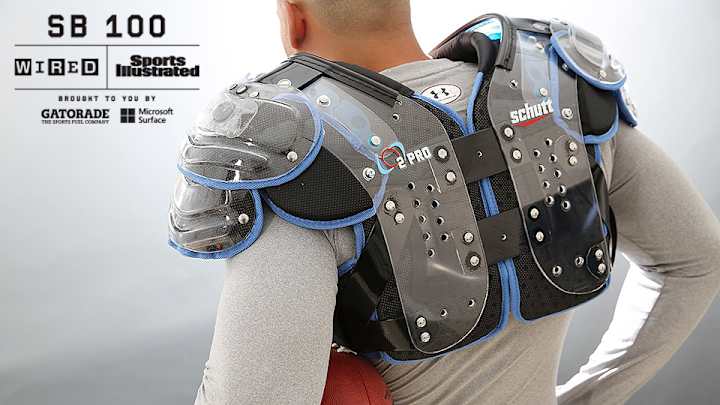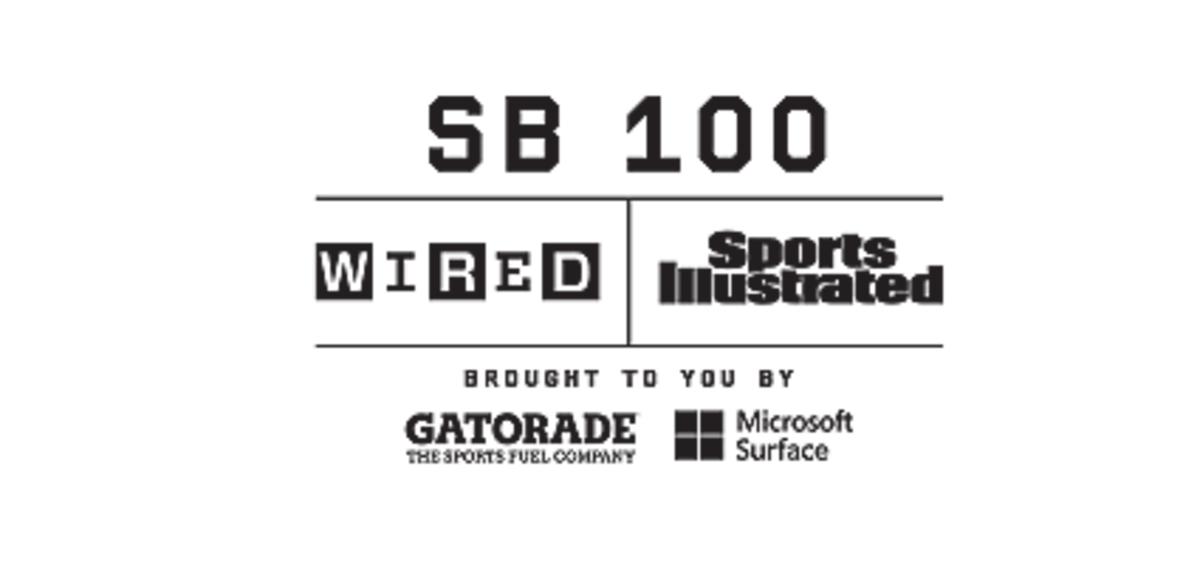How far are athletes willing to go to gain an edge on the gridiron?

With the rollout this season of RFID (radio-frequency identification) player-tracking technology in every NFL stadium—bottle-cap-sized chips are embedded in every set of shoulder pads—the league can keep tabs on all of its players the same way that businesses do their inventories. The system, provided by Zebra Technologies and still largely kept under wraps by the NFL, is geared partly toward improving the TV experience, but when that data is opened up to fans and teams, things could get really interesting. We could soon see the routes every player runs, answering the question, Which Patriots receiver best matches up with Tom Brady? Strength and conditioning coaches could slice and dice data to extract whatever performance metrics they most care about—How far does Adrian Peterson actually run in each game?—and use that information to fine-tune training methods.
Zebra’s system, though, is really only data lite. This setup tracks a player’s pads, not the human wearing them. To truly understand what each athlete goes through requires far more detailed telemetry. As a hint of where that is headed, consider: Zebra’s tags can also be used as communication hubs to relay info from any Bluetooth devices that a player might be wearing.
The next big question: How far are players and coaches willing to go to gain an edge? Forget fitness wearables like Apple Watches and Fitbits—pushing limits on the field will require pushing far more personal limits. As director of Elite Performance for STATS LLC, Paul Robbins explores the world of wearables, patches and sensors on behalf of pro teams, and to show the future of the field, he carries around a half-inch by one-eighth-of-an-inch medical implant used for tracking heart rhythms. “When guys complain about a patch,” Robbins says, “I pull out the implant and say, ‘We could just imbed this into your chest.’ ”
Look for new entries in the Super Bowl 100 series, presented by Gatorade and Microsoft Surface, at SI.com/SB100 and Wired.com/SB100
Chapter 1, Oct. 7 TRAINING
Chapter 2, Oct. 28 EQUIPMENT
Chapter 3, Nov. 18 STADIUMS
Chapter 4, Dec. 9 CONCUSSIONS
Chapter 5, Dec. 16 MEDIA
Chapter 6, Dec. 30 VR
Chapter 7, Jan. 6 NFL IN SOCIETY
Chapter 8, Jan. 13 TRACKING
Chapter 9, Jan. 20 STRATEGY
Chapter 10, Jan. 27 SB 100
ROAD MAP TO
THE FUTURE
This seemingly distant future is much closer to the present in the world of endurance sports, where athletes are already using a host of medical technologies, from Band-Aid sized patches that were initially designed for tracking patient vital signs to continuous blood glucose monitors intended for diabetics. The problem with these types of sensors is the sheer volume of data they generate and how to best use that info. “We’re still moving out of a crude era,” says Sky Christopherson, a former Olympic track cyclist who embraced the power of big data when he trained the U.S.’s silver-medal-winning women’s team pursuit squad for London 2012. “It’s going to take some time until you really can individualize [training] to get each person to their potential.”
Perhaps the most interesting—certainly the most personal—physiological data will come from DNA. An athlete’s genetic code may be the real key to reaching his or her full potential. Genes control how our bodies work, and variations on those genes are responsible for physical differences. Beyond hair and eye color, gene variants affect how our bodies create collagen, the main structural protein from which ligaments are made, and how we respond to supplements. Knowing an athlete’s genetic makeup could guide dietitians in designing nutrition programs, or it could predict whether an athlete is at greater risk of, say, an ACL tear, allowing coaches to tweak training around that fragility. “If we know where you’re weak,” says Jeremy Koenig, CEO of Athletigen, which uses DNA analysis to improve performance, “we can make you strong.”
As DNA testing of athletes becomes more widespread, the line between personal medical data and a player’s personnel file will blur. We’ve already seen the issues this can cause: In 2005, after Eddy Curry missed 13 games with an irregular heartbeat, the Bulls asked their center to take a DNA test; he declined and was traded. “Pro athletes are people, and they should be respected as such; their info is private,” says Koenig. “But some would argue otherwise, that they’re a human asset.” The ’08 Genetic Information Nondiscrimination Act made it illegal to take action against an employee based on DNA testing, but that legislation ignores the fact that once something is known, it’s nearly impossible to ignore.
The truly dark side of DNA analysis, though, might be in CRISPR/cas9, an existing technology that allows scientists to physically edit genetic code. Taken to its unethical extreme, CRISPR could render all of these ideas about nurturing imperfection redundant. Why would anyone ever dream of tweaking Brady or Peterson when you could just splice the two together?

